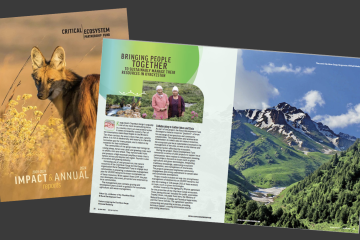Impact
CEPF envisions a world where vibrant ecosystems support, and are supported by, thriving communities. Our grants to civil society organizations in the world's biodiversity hotspots are designed to build this future. It will be a long journey, but CEPF’s amazing grantees are making progress.

-
US$ 324 Million
In Grants Awarded
-
2817 Grantees
In Over 112 Countries and Territories
-
1340 Species
Globally Threatened Species Supported
55.8 million hectares
Key Biodiversity Areas (KBAs) with strengthened management (larger than Japan)
KBAs are sites that contribute significantly to the global persistence of biodiversity. CEPF uses KBAs as the lens for selecting geographic priorities for conserving species.
To qualify as “strengthened,” an area must have benefited from one or more of a range of actions that contribute to improved management, such as increased patrolling, invasive species control or eradication or introduction of sustainable agricultural/fisheries practices. CEPF grantees also have contributed to the creation of 17.1 million hectares of protected areas.
US$431 million
Additional conservation funding leveraged by CEPF grants
CEPF encourages, and works to empower, its grantees to generate additional funding themselves, enabling them to extend the scope of their work and ensure that the solutions they have put in place will last. In many cases, their experience in successfully managing grants from CEPF opens doors to other funding organizations.
5,714 Communities
Directly benefiting from CEPF-funded projects
Communities have received livelihood benefits such as improved access to clean water, improved land tenure and increased representation in decision-making processes. Additionally, more than 114,000 individuals have received cash benefits and more than 234,000 received training to boost nutrition, expand agricultural production and achieve other improvements.

CEPF's Latest Impact and Annual Report
Get more details on the difference CEPF's grantees are making. Their actions conserve ecosystems, support communities and contribute to global conservation and sustainable development goals.